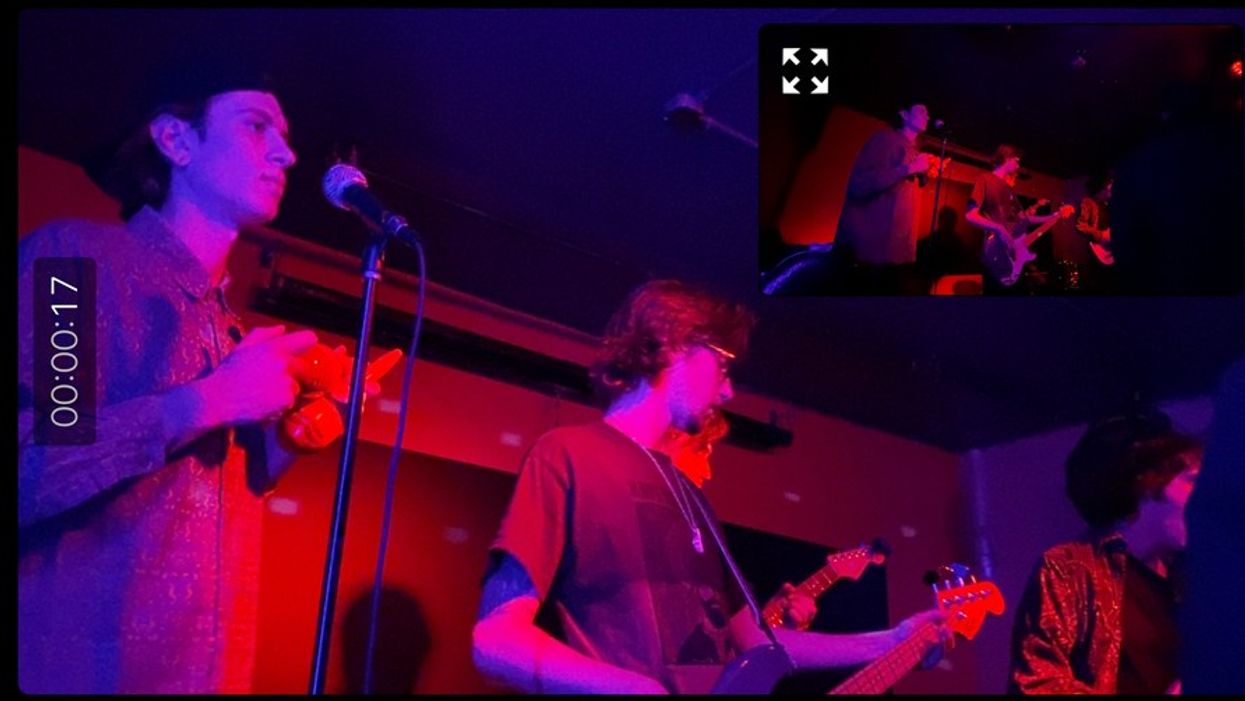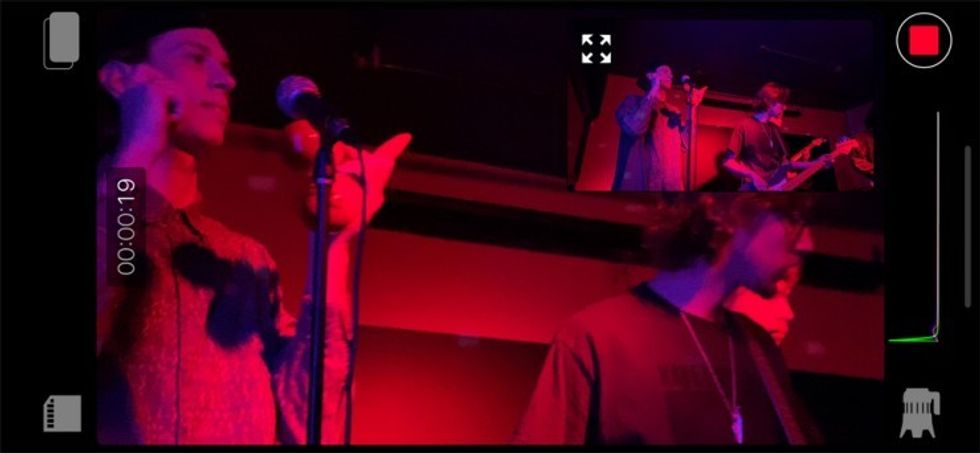Their second film, Susana, is set to wow this year's festival audiences. The short follows an American tourist in Mexico City who finds herself alone, experiencing the rich culture in ways that might not always be appropriate or sensitive, even as she experiences heartaches of her own.
We spoke with the filmmakers via email ahead of the festival to learn about their low-budget approach and their festival experiences. How did they find locations, and what was it like working with non-actors? They share their insights.
 Susanavia Sundance Institute
Susanavia Sundance Institute
No Film School: You mentioned taking a "grassroots approach" to casting and location scouting. Could you walk us through your process of finding and securing locations across Mexico City, particularly for a low-budget production?
Gerardo Coello Escalante and Amandine Thomas: We wrote the script with the specific locations in mind, and we spent about a month of pre-production repeatedly visiting these locations, creating relationships with people there, and pitching them our film.
We were able to secure locations by developing a personal relationship with the owners of the venues and the locals, as well as by casting people in these locations who deeply understood the ideas we were exploring in the film.
We had a really amazing location fixer who helped us a lot with the more complicated street locations with large crowds. Once people got on board, they were really willing to help.
NFS: The film deals with complex themes around tourism, cultural change, and Mexican-American relations. How did you balance the social commentary with your engaging story?
Escalante and Thomas: We’re less interested in certainty about a moral value than we are in exploring morally dubious characters and situations. The rise in tourism and gentrification in Mexico City is a complicated process that has completely transformed areas of the city that Gerardo grew up in.
It’s a fascinating global experience with no easy answers that we talk a lot about as an American spending time in Mexico and a native Mexican person who works in the US. We’ve both noticed a kind of corrupting force that occurs when your currency is valued higher than the currency of the place you are visiting, no matter who you are.
With SUSANA, we wanted to make a film that explored Susan’s interiority with empathy and respect while also considering these social phenomena. We don’t wish for the viewer to place themselves outside of this narrative.
The fact that the protagonist is so open and lonely and kind and is also at the crux of this paradigm is intended to complicate any easy takeaways.
 Susanavia Sundance Institute
Susanavia Sundance Institute
NFS: What challenges did you face directing a cast of experienced and non-professional actors?
Escalante and Thomas: In both Viaje de Negocios and SUSANA, we worked mostly with first-time actors, with a few more experienced actors in various roles. Honestly, on both of these projects, the actors, whether first-timers or experienced, were the least challenging part of production.
We talk through the truth of each scene and let them roll with it. This is why the casting process is so important to us. We do a lot of improv and acting exercises during auditions, and we let the actors change our minds of how the role could be played. If you find people who really connect to your project and to their character, it’s an absolute joy to watch them play.
The biggest challenge in SUSANA was deciding what to cut out from the improvisations the cast came up with on set.
NFS: Andrea Gavazzi's cinematography captures character moments alongside the environment of Mexico City. How did you develop the visual language for this story?
Escalante and Thomas: Andrea is a friend of ours, and he came in about 48 hours before Day 1. We sent him the materials, our shortlists, and (very poorly drawn) storyboards, we did a big scout the day before production and he immediately got what we were after and provided so many ideas. He understood the visual language we had been working towards and made it fully his own, creating these painterly compositions in the midst of the chaos of Mexico City.
It was a true dream come true for both of us to collaborate with Andrea on this film, who on top of being an incredibly talented cinematographer, is the kindest and most sensitive person on set.
NFS: As co-directors who are also creative partners, how do you divide responsibilities during pre-production, shooting, and post-production?
Escalante and Thomas: Having worked in the film industry for a long time in many different roles, both of us have developed the hard skills necessary to get a film made.
As collaborators, we know each of our creative strengths and have developed a pretty seamless way of working together. We do the creative work together and divide up our credits based on what is appropriate for each project. We respect each other's visions and create a space where all ideas are considered, most of the best ideas come randomly.
On low-budget projects like this, we just have to be really DIY and "get it done no matter what" approach.
 Susanavia Sundance Institute
Susanavia Sundance Institute
NFS: You have another short film that premiered at Sundance and played at many festivals. When developing Susana, how did that previous festival experience inform your decisions?
Escalante and Thomas: Making our first short together, Viaje de Negocios, was a big step for us towards the kind of careers that we want. The making of that film was such a beautiful and difficult experience, and we decided to use that momentum to make SUSANA that same year.
We found out about our Sundance acceptance for Viaje de Negocios during pre-production for SUSANA and it was a huge boost, it helped to validate the risks we were taking and it gave us the confidence to forge onward. It felt great to be editing SUSANA while at Sundance last year.
We realized how important it is to have the next thing cooking, both to be able to pitch to industry folks, and also to feel empowered and in control of your artistic endeavors because so much of the response and the festival journey is out of your control.
NFS: What creative solutions did you find to maximize your resources?
Escalante and Thomas: We are all about creative solutions because we don’t have the money to throw at a problem. On our projects, we take on as many roles as necessary to get the film made. We work with a small, nimble, team of collaborators who are excited about the film. We try hard to get our first choice before making compromises.
Filmmaking is such a group effort and none of our films could have been made without the hard work of so many talented collaborators who have believed in us and our projects. We are so grateful to all of them.



 Susanavia Sundance Institute
Susanavia Sundance Institute Susanavia Sundance Institute
Susanavia Sundance Institute Susanavia Sundance Institute
Susanavia Sundance Institute









